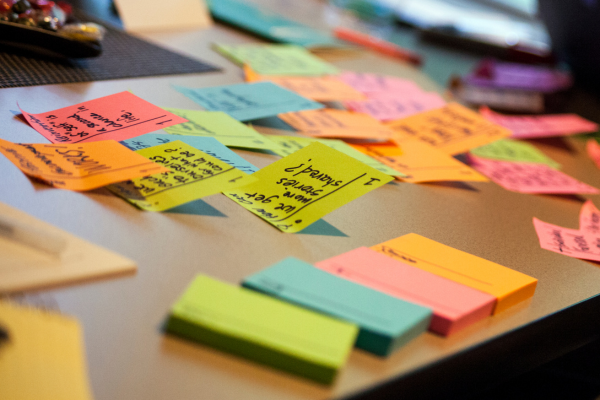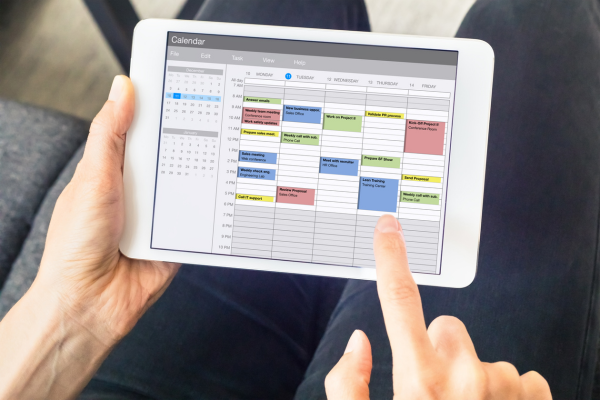Leadership Blog

Plan For Tomorrow Today!
Running a business is challenging on its best day. The average leader has multiple tasks, projects, and people coming at him numerous times throughout the day. All this activity makes getting anything done very difficult.
Because you have so much to do, you are wise to plan well. One key in planning well is to plan for tomorrow today. What do I mean by that statement? How can you do that?
Read below to discover 6 tips on how to plan for tomorrow today and get it all done!
Tip #1 – Stop before the day is over to assess!
Many people leave for the day without assessing what’s on their platter for tomorrow. In the morning, they will show up and figure it all out. Doing so, however, will cause you to lose some very valuable time and will likely keep you from being efficient and effective.
What do I mean by stop to assess? The best time to assess is while things are on your mind. Rather than waiting to arrive in the morning to determine what you will work on during the day, why not do it before you leave work today?
Where are you with certain projects? What is your priority for tomorrow? What can be pushed off until later in the week? Questions like these help you evaluate what you should plan to do tomorrow.

Tip #2 – Identify tomorrow’s “big rocks!”
According to Stephen Covey, “big rocks” are the tasks or responsibilities that must be done. Many people allow smaller tasks to crowd out the big tasks. Doing so increases your stress and decreases your effectiveness.
Truthfully, most days you will not get everything done that needs to be done. That’s precisely why you need to enter your “big rocks” on your schedule first. You can determine your “big rocks” by importance, time deadlines, travel schedules, etc.
Often it takes deep thought to identify your “big rocks.” That’s why it is helpful to do so the day before. Planning “on the fly” doesn’t usually work well. Set aside quality time to examine everything you have going on. Select and place the most important tasks on tomorrow’s schedule before you leave for the day. Doing so will assure that you address your “big rocks” first and avoid getting sidetracked by less important tasks or responsibilities.
Tip #3 – Add less important tasks!
By less important, I do not mean these things are unimportant. These tasks or responsibilities are important but not as important as your “big rocks.”
If you add less important tasks first, you will not have space for your “big rocks.” In his public presentations, Stephen Covey gives a great illustration by physically showing the impossibility of adding in the “big rocks” once the container was filled with water and sand.
It is always wise to prioritize your smaller, less important tasks. Because of their volume, they can easily overwhelm you. Prioritizing them puts them in order of significance or importance.

Tip #4 – Time-block your day!
By time-blocking, I mean carving out a section of tomorrow’s workday and scheduling a specific task for that time.
Time-blocking forces you to do a couple of things.
First, it requires you to estimate how much time a task will take. Although estimating time may appear to be easy, I assure it is not. Most of us are not very good at estimating how we use time. We list out tasks without giving much thought of how much time a task may take. Placing a task in a designated period of time forces you to estimate how much time it will take to get it done.
Second, time-blocking forces you to plan your workday. It is so easy to go throughout a day and not give much thought to time. Unless you plan your time, things that just arise during the day will eat it up. If you are concerned about being too rigid or inflexible with your schedule, I suggest you schedule some “flex time” in your day. “Flex time” is unplanned time between planned time that allows you to adjust as necessary to what arises. If nothing arises, you can use it for whatever you want.

Tip #5 – Place tasks on your schedule!
The next step is to tie specific tasks to a designated time on tomorrow’s calendar before you leave work. Doing so will provide your “marching orders” for tomorrow’s workday. You don’t have to arrive at work to determine what you need to do. You don’t have to figure it out once you get to work. You already know what you are going to do before the day begins. If something arises between now and tomorrow, you can always adjust. Just don’t make a habit of changing things, or it will derail your progress.
You will be amazed at the serenity planning tomorrow’s schedule will provide for you. You can leave work at work. You have spent the necessary time to plan tomorrow today. When you arrive in the morning, you are ready to go!
Tip #6 – Work your plan!
The last step is to work your plan. Be dogged about working your plan. Although things interfere occasionally, just make sure constant change doesn’t become the norm. Otherwise, you might as well not plan.
When you leave at the end of the day, leave work at work. When you arrive in the morning, get down to work and follow your scheduled plan. Doing so will increase your productivity, reduce your stress, and improve your efficiency.
Make it a habit to plan the next day before you leave for home. Think of this process as a never-ending cycle. Just keep working the schedule! It will literally change your life!
Planning tomorrow today is a powerful concept that enables people to grow in their leadership, efficiency, and productivity. I highly recommend it!



Facebook
LinkedIn
Youtube
Instagram